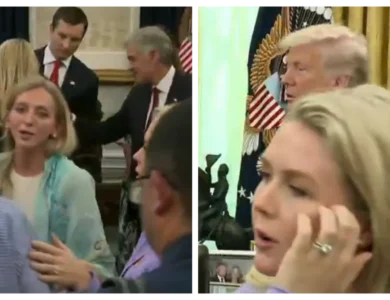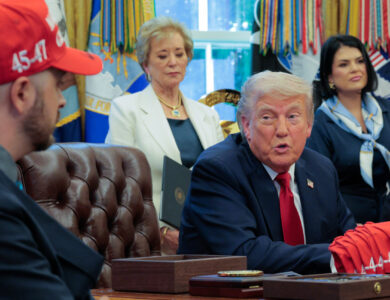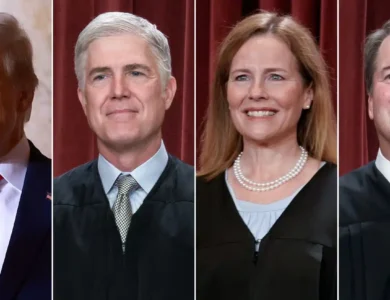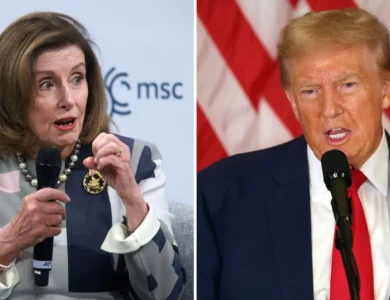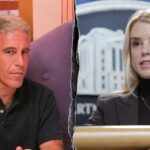SCOTUS Greenlights Trump Plans For ‘Large-Scale’ Firings At Federal Agencies
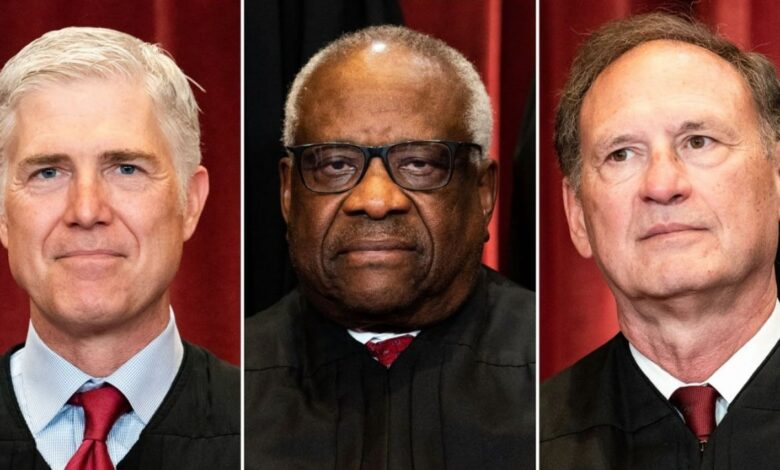
The U.S. Supreme Court delivered another win for President Donald Trump on Tuesday, clearing the way for his executive order to downsize the bloated federal government through mass layoffs across multiple agencies.
In an unsigned order, the justices overruled a lower court decision that had blocked the president’s February 13 directive calling for “large-scale reductions in force.” That freeze came from Clinton-appointed Judge Susan Illston in Northern California, but the Supreme Court said her ruling was based on her personal view of the order’s legality, not on the actual reorganization plans, which weren’t even before the court, The New York Post reported.
“Because the Government is likely to succeed on its argument that the Executive Order and Memorandum are lawful — and because the other factors bearing on whether to grant a stay are satisfied — we grant the application,” the court said.
Even liberal Justice Sonia Sotomayor joined the majority in granting the stay, though she made it clear she wasn’t endorsing the downsizing effort itself—just that it was too soon to block it.
“I join the Court’s stay because it leaves the District Court free to consider those questions in the first instance,” she wrote. “The plans themselves are not before this Court, at this stage.”
Justice Ketanji Brown Jackson dissented, blasting the decision and claiming it could lead to “mass employee terminations, widespread cancellation of federal programs and services, and the dismantling of much of the Federal Government as Congress has created it.”
She argued that Trump needed congressional approval before taking such action, saying, “Under our Constitution, Congress has the power to establish administrative agencies and detail their functions.”
But the court’s majority wasn’t buying it. They determined the administration was within its authority to begin implementing the president’s plan.
The move is part of a broader effort by the Trump administration to shrink government and restore efficiency. The Department of Government Efficiency—formerly led by Elon Musk—has been overseeing the transition.
Labor unions and progressive groups had sued to stop the plan, which would affect staff at key agencies including Agriculture, Energy, Labor, the Interior, the Treasury, State, Veterans Affairs, the EPA, and others.
Attorney General Pam Bondi praised the decision, writing on X: “Today, the Supreme Court stopped lawless lower courts from restricting President Trump’s authority over federal personnel — another Supreme Court victory thanks to [Justice Department] attorneys.”
“Now, federal agencies can become more efficient than ever before,” she added.
The decision adds to the fantastic two months the president has had at the Supreme Court.
His latest victory in June saw the court decide to hear a Republican-led appeal to U.S. campaign finance regulations that limit the amount of money political parties may spend on behalf of specific candidates.
The case, National Republican Senatorial Committee v. Federal Election Commission, was originally brought before the court by the National Republican Senatorial Committee (NRSC), the National Republican Congressional Committee (NRCC), and two Senate Republican candidates running for office at the time, including now-Vice President JD Vance.
It is about whether federal limitations on campaign expenditure by political parties violate free speech safeguards under the First Amendment of the Constitution.
Petitioners asked the Supreme Court to consider the issue, claiming that the spending limitations “severely restrict political party committees from doing what the First Amendment entitles them to do: fully associate with and advocate for their candidates for federal office.”
A decision by the Supreme Court’s 6-3 conservative majority could have far-reaching consequences for campaign spending in the United States, undermining the Federal Election Campaign Act of 1971, a law passed by Congress more than 50 years ago to limit the amount of money that can be spent on behalf of candidates.
The case comes as federal election spending reaches all-time highs: presidential contenders in 2024 raised at least $2 billion and spent around $1.8 billion, according to FEC data.
